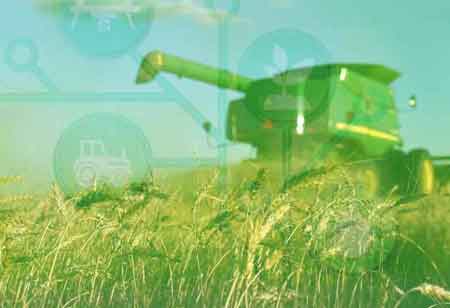Thank you for Subscribing to Agri Business Review Weekly Brief
Eight Aspects of Vertical Farming
To attain the repeatability required to produce a high-quality product in this facility and consistently harvest an excellent bell pepper or purple carrot, we must process engineer the factory for reliable inputs and outputs.

By
Agri Business Review | Friday, September 06, 2024
Stay ahead of the industry with exclusive feature stories on the top companies, expert insights and the latest news delivered straight to your inbox. Subscribe today.
To attain the repeatability required to produce a high-quality product in this facility and consistently harvest an excellent bell pepper or purple carrot, we must process engineer the factory for reliable inputs and outputs.
Fremont, CA: Vertical farming is expected to gain traction over the next decade because of government subsidies, rising global food consumption, concerns about climate change, and innovation that makes indoor growth more efficient and profitable.
Here are aspects of vertical farming you should know about:
Grow at a Scale
To grow, we require water, light, and nutrients. We still have a long way to go before charging what people expect to spend for a head of lettuce or a bell pepper rather than $8. Never mind that it is organic, GMO-free, pesticide-free, does not require washing, and is grown locally. Vertically farmed produce must be affordable to gain popularity.
To make vertical farming profitable, we must scale up. Growing 5 or 500 plants at once differs from growing 5,000 or 50,000.
Complexities and Disease
Plants are as simple to cultivate as they are to kill. Caring for ten plants in a container-sized indoor farm is one thing. Another is tending to ten distinct grow rooms with varied plants in different stages of development.
Plants can also get sick indoors. When we keep growing plants in the exact small location, the threats they face are magnified. A faulty batch of seeds or an incorrect nutrition mix might destroy an entire harvest.
Insatiable Thirst
Traditional outdoor industrial farms gather and use significant rainwater for irrigation. The vertical farm requires "boutique" water. This treated water is pumped full of nutrients, giving the plant exactly what it needs instead of what it would get from the soil. A sizeable vertical farm uses millions of gallons of water.
Someone needs to clean up and process that water to be reused. The municipality occasionally dictates recovery. As a result, the large-scale vertical farm will require a significant wastewater infrastructure. It also includes options for how it treats and reuses water. For example, a vertical farm operator may consider adopting technologies to clean its water, potentially recovering some nutrients and water. There may be potential for the vertical farm to create efficiencies that assist the bottom line while making it a pleasant neighbor.
Repeatability for Quality
To attain the repeatability required to produce a high-quality product in this facility and consistently harvest an excellent bell pepper or purple carrot, we must process engineer the factory for reliable inputs and outputs.
Each plant requires identical nutrients, water flow, and climatic conditions. Looking closely at the growth zone, we notice several serious concerns. How can we ensure the plant nearest to the process pump or reservoir isn't stealing all the nutrients? How can we ensure that the plant at the ultimate end of your growing tray receives what it requires? We can implement large-scale vertical farming if we can develop low-cost engineering answers to these problems.





